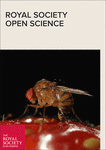|
Autores/as
Pons, R. ; Guala, A.; Rodríguez-Palomares, J.F.; Cajas, J.C.; Dux-Santoy, L.; Teixidó-Tura, G.; Molins, J.J. ; Guala, A.; Rodríguez-Palomares, J.F.; Cajas, J.C.; Dux-Santoy, L.; Teixidó-Tura, G.; Molins, J.J. ; Vázquez, M.; Evangelista, A.; Martorell, J. ; Vázquez, M.; Evangelista, A.; Martorell, J.
|
Abstract
Abnormal fluid dynamics at the ascending aorta may be at the origin of aortic aneurysms. This study was aimed at comparing the performance of computational fluid dynamics (CFD) and fluid–structure interaction (FSI) simulations against four-dimensional (4D) flow magnetic resonance imaging (MRI) data; and to assess the capacity of advanced fluid dynamics markers to stratify aneurysm progression risk. Eight Marfan syndrome (MFS) patients, four with stable and four with dilating aneurysms of the proximal aorta, and four healthy controls were studied. FSI and CFD simulations were performed with MRI-derived geometry, inlet velocity field and Young's modulus. Flow displacement, jet angle and maximum velocity evaluated from FSI and CFD simulations were compared to 4D flow MRI data. A dimensionless parameter, the shear stress ratio (SSR), was evaluated from FSI and CFD simulations and assessed as potential correlate of aneurysm progression. FSI simulations successfully matched MRI data regarding descending to ascending aorta flow rates (R2 = 0.92) and pulse wave velocity (R2 = 0.99). Compared to CFD, FSI simulations showed significantly lower percentage errors in ascending and descending aorta in flow displacement (−46% ascending, −41% descending), jet angle (−28% ascending, −50% descending) and maximum velocity (−37% ascending, −34% descending) with respect to 4D flow MRI. FSI- but not CFD-derived SSR differentiated between stable and dilating MFS patients. Fluid dynamic simulations of the thoracic aorta require fluid–solid interaction to properly reproduce complex haemodynamics. FSI- but not CFD-derived SSR could help stratifying MFS patients.
|

WoS
Scopus
Altmetrics
  
|
|
Publicación
Royal Society Open Science, 05 February 2020, v.7, n.2, 191752
|
